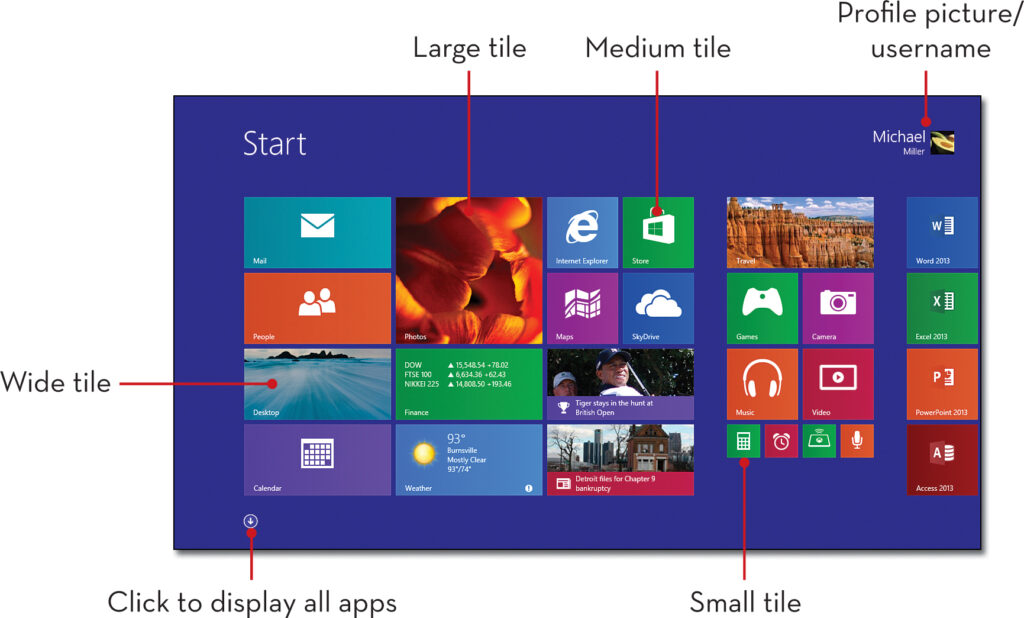Unlocking the Potential: A Comprehensive Guide to Using Windows 8.1’s New Interface

Windows 8.1, the successor to Windows 8, introduced a range of new features and enhancements aimed at improving usability, performance, and productivity. One of the most notable changes in Windows 8.1 was the introduction of a revamped interface, characterized by the Start screen, live tiles, and a touch-friendly design. While the new interface sparked some controversy upon its release, it also brought with it a host of innovative features and customization options that empowered users to personalize their computing experience like never before. In this comprehensive guide, we will explore the ins and outs of Windows 8.1’s new interface, providing you with the knowledge and tools you need to navigate, customize, and optimize your Windows experience.
Understanding Windows 8.1’s New Interface:
Windows 8.1’s new interface represents a departure from traditional desktop computing paradigms, embracing touch-centric design principles and incorporating elements from the mobile computing world. At the heart of the new interface is the Start screen, a dynamic, tile-based interface that serves as the central hub for accessing apps, files, and settings. Live tiles, another hallmark feature of the new interface, provide real-time updates and information right on the Start screen, allowing users to stay connected and informed at a glance. Additionally, Windows 8.1 introduced improved multitasking capabilities, enhanced search functionality, and tighter integration with cloud services, further enhancing the user experience.
Navigating the Start Screen:
The Start screen is the focal point of Windows 8.1’s new interface, providing users with a customizable, touch-friendly interface for launching apps, accessing settings, and viewing live updates. Here’s how to navigate the Start screen effectively:
- Accessing the Start Screen: To access the Start screen, simply press the Windows key on your keyboard or click on the Windows icon in the taskbar.
- Organizing Tiles: You can organize tiles on the Start screen by grouping them into categories, resizing them, or moving them around to suit your preferences. To resize a tile, right-click on it and select the desired size from the context menu. To move a tile, click and drag it to the desired location.
- Customizing Live Tiles: Many tiles on the Start screen are “live,” meaning they display real-time updates and information. To customize a live tile, right-click on it and select “Resize” or “Turn live tile off” from the context menu.
- Accessing All Apps: To view all installed apps, swipe up or click on the down arrow icon in the bottom-left corner of the Start screen. This will display a list of all installed apps in alphabetical order.
- Searching: Use the search feature on the Start screen to quickly find apps, files, or settings. Simply start typing, and Windows will display relevant results in real-time.
Customizing the Interface:
Windows 8.1’s new interface offers a high degree of customization, allowing users to personalize their computing experience to suit their preferences and workflow. Here are some customization options to explore:
- Personalization Settings: Access the personalization settings in Windows 8.1 to customize the Start screen background, accent colors, and lock screen images. Right-click on the desktop and select “Personalize” from the context menu to access these settings.
- Pin Apps: Pin frequently used apps to the Start screen for quick and easy access. Simply right-click on an app icon in the All Apps view and select “Pin to Start.”
- Create App Groups: Group related apps together on the Start screen to keep them organized and easily accessible. Click and drag an app icon to create a new group, or drag it onto an existing group to add it.
- Adjust PC Settings: Access the PC settings app to customize various system settings, such as network, privacy, and security options. Swipe from the right edge of the screen to open the Charms bar, then select “Settings” and click on “Change PC settings.”
Optimizing Performance and Productivity:
Windows 8.1’s new interface is designed to enhance performance and productivity, with features and optimizations aimed at streamlining common tasks and workflows. Here are some tips for optimizing your Windows 8.1 experience:
- Familiarize Yourself with Keyboard Shortcuts: Learn keyboard shortcuts to navigate Windows 8.1 more efficiently and perform common tasks quickly. For example, press Win + D to show the desktop, Win + X to open the Power User menu, or Win + L to lock the screen.
- Utilize Search: Take advantage of the powerful search functionality in Windows 8.1 to find apps, files, and settings quickly. Press Win + S to open the search charm, then start typing to search for what you need.
- Explore Gesture Controls (For Touch Devices): If you’re using a touch-enabled device, familiarize yourself with gesture controls to navigate Windows 8.1 more intuitively. For example, swipe from the right edge of the screen to open the Charms bar, swipe from the left edge to switch between open apps, or swipe down from the top edge to close an app.
- Stay Updated: Keep your system up-to-date with the latest updates and patches from Microsoft to ensure optimal performance and security. Enable automatic updates in Windows Update settings to receive updates automatically.
Conclusion:
In conclusion, Windows 8.1’s new interface represents a significant evolution in the world of desktop computing, introducing a range of innovative features and enhancements aimed at improving usability, performance, and productivity. By familiarizing yourself with the new interface, exploring customization options, and optimizing your workflow, you can unlock the full potential of Windows 8.1 and enjoy a more efficient and productive computing experience. Whether you’re a casual user, a business professional, or a power user, Windows 8.1’s new interface offers something for everyone, empowering you to work, create, and connect with ease in the modern digital age. So, embrace the new interface, explore its features, and discover how Windows 8.1 can enhance your computing experience like never before.




